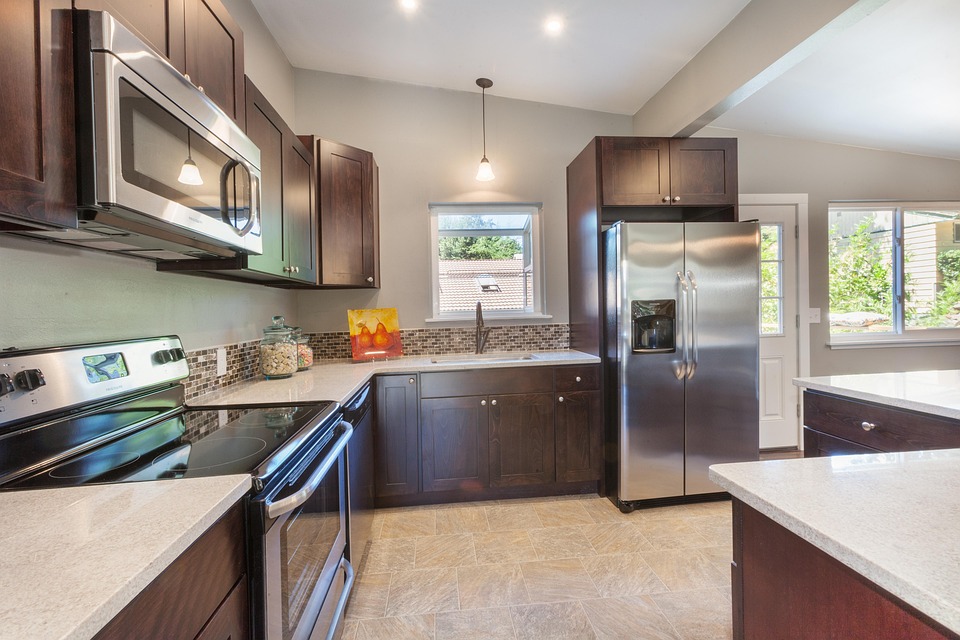The kitchen has long been considered the heart of the home, where families gather, meals are prepared, and memories are made. In recent years, however, this space has experienced a revolutionary transformation, driven by advancements in smart technology. As we look toward the future, several key trends are shaping kitchen design, merging functionality with cutting-edge innovation to create spaces that are efficient, sustainable, and tailored to modern lifestyles.
The Rise of Smart Appliances
One of the most significant trends in kitchen design is the integration of smart appliances. These high-tech gadgets, equipped with Internet of Things (IoT) capabilities, allow homeowners to control and monitor their kitchen appliances remotely. Refrigerators that can track expiration dates, ovens that can be preheated from a smartphone, and dishwashers that operate on schedules are becoming increasingly common. These appliances not only enhance convenience but also promote energy efficiency.
Key Features to Consider:
-
Voice Activation: Many smart appliances now come with voice-controlled features, allowing users to operate them hands-free. Imagine simply saying, “Preheat the oven to 350 degrees,” while preparing a meal.
-
Remote Monitoring: Smart refrigerators can send alerts when grocery items are running low, helping homeowners keep their kitchens stocked without excessive wastage.
- Smart Cooking Programs: Ovens and cooktops now offer guided cooking, using sensors and pre-programmed recipes to ensure perfect meals every time.
Sustainable and Energy-Efficient Solutions
As environmental consciousness rises, kitchen design is increasingly focused on sustainability. Smart technology plays a crucial role in this shift. Energy-efficient appliances not only help reduce utility bills but also minimize carbon footprints.
Sustainable Features to Incorporate:
-
Energy Monitoring Systems: Smart devices can track energy consumption and help homeowners adjust their usage patterns, promoting sustainable cooking and cleaning habits.
-
Water Conservation: Smart faucets with touchless or voice activation capabilities ensure that water is only used when necessary, reducing waste.
- Recyclable Materials: Incorporating eco-friendly materials in cabinetry and countertops, such as recycled composites or sustainably sourced wood, contributes to a greener kitchen design.
The Role of Smart Home Integration
In an age where everything is interconnected, the kitchen must seamlessly integrate with the broader smart home ecosystem. A holistic approach ensures that all devices communicate effectively, enhancing the overall user experience.
Home Automation Features:
-
Centralized Control Systems: Smart home hubs allow users to control lighting, climate, and security alongside kitchen appliances, creating a cohesive environment.
-
Routine Scheduling: Homeowners can set up routines that, for example, turn on the kitchen lights and start brewing coffee at 7 AM every day, enhancing daily convenience.
- Health Monitoring: Some kitchens are now being equipped with health-monitoring devices that can track caloric intake or recommend meals based on dietary preferences, tapping into personalized nutrition.
Design Aesthetics Meet Functionality
While functionality is essential, aesthetics remain a critical aspect of kitchen design. The challenge for designers is to create spaces that not only incorporate smart technology but also reflect personal style and taste.
Design Considerations:
-
Sleek, Minimalist Designs: Smart technology often looks best when it is integrated discreetly. Designers are opting for clean lines and hidden tech, ensuring that the kitchen remains a visually pleasing space.
-
Innovative Storage Solutions: As technology takes up more space, effective storage solutions become crucial. Pull-out cabinets, hidden compartments, and multi-functional furniture help maintain an uncluttered environment.
- Smart Lighting: Beyond functionality, smart lighting can enhance the ambiance of a kitchen. Adjustable LED lights that change color and intensity based on the time of day or activity can elevate the mood of the space.
The Future of Kitchen Design
As smart technology continues to evolve, the kitchen of tomorrow will likely become even more integrated and intuitive. Whether it’s through advanced AI cooking assistants or automated inventory management, the possibilities are limitless.
In conclusion, designing a kitchen with smart technology in mind not only enhances its functionality but also elevates the overall user experience. By staying on top of these trends, homeowners and designers can create spaces that are forward-thinking, efficient, and, above all, enjoyable to use. The kitchen of the future is not just about cooking; it’s about creating a lifestyle that embraces technology, sustainability, and style.



